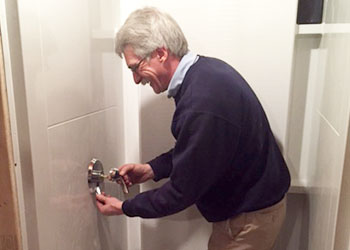Last week on Facebook, we posted a picture of a root ball and someone asked what exactly that meant. "It looks so much like a snake or something," she commented.
'Snake' is one of the kinder euphemisms that come to mind when looking at this root ball we extracted from a home in Mansfield, CT. I'll let you pick the description of your choosing...
What causes a root ball?
The simple answer: tree roots. Roots will always reach for water sources. Drains from homes are great because the water's always flowing! No need to wait for the next rainstorm! Roots also are great at finding weak spots. If there is a bad connection, or joint, in a pipe, a root will find it.Once it has a point of entry, the root will continue to grow. Since a pipe is such a confined space, the root has no choice but to begin to curl and "ball up." Added to the roots is all the waste from your home's drains, and it becomes quite the mass. This is where the term "root ball" comes from. It is also why sinks begin to stop up and toilets won't flush. Eventually no water will be able to get past the blockage.
Solution
Cast-iron pipes and orangeburg pipes are most susceptible to root balls. Cast-iron piping starts to crumble and deteriorate with age, providing plenty of weak spots for roots to find. Orangeburg piping is porous by nature and it is only a matter of time before a root ball will form within. This type of piping is not up today's code standards. More often than not, the only solution is to cut out the damaged section of pipe, remove the root ball [usually with brute force!], and replace the pipe with a plastic variety.Rapid Service's team of plumbers, electricians & carpenters are available for emergency services. Our toll-free number is 800-229-8177.
























